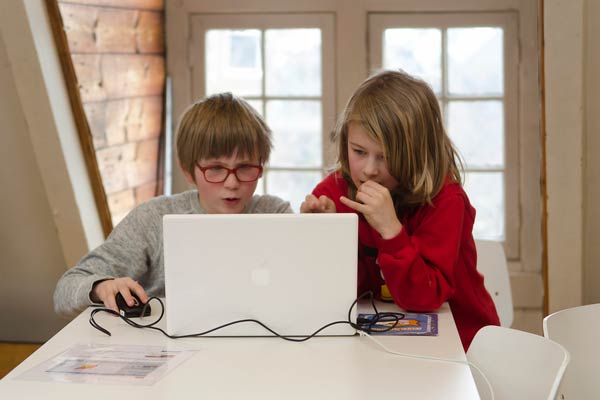
 If you're finding that living in the age of digital parenting is a tough task, you are certainly not alone. Not only are you plugged into work and life at every moment of every day, but so, too, are your kids. Of course, it's great to be able to have answers to your questions and social interaction at the swipe of a security code, but some families are starting to explore the benefits that can be had from implementing tech-free zones within their homes and daily lives.
If you're finding that living in the age of digital parenting is a tough task, you are certainly not alone. Not only are you plugged into work and life at every moment of every day, but so, too, are your kids. Of course, it's great to be able to have answers to your questions and social interaction at the swipe of a security code, but some families are starting to explore the benefits that can be had from implementing tech-free zones within their homes and daily lives.
Of course, this begs the question: What are tech-free zones, anyway? It may sound counter-intuitive, since digital parenting is largely built around the idea of being able to connect and relate to your kids via today's technology, but Tech-Free Zones, aptly named, are places in families' lives where technology is simply not permitted.
While some of the examples of tech-free zones may seem obvious on paper, the reality is that many families have become so used to seeing smartphones and tablets at the dinner table, for example, that it's just not something that is seen as unusual or even something that needs to be removed. If this statement caught your attention, you're in good company! Parents all over the country are starting to take notice of the fact that technology has crept into their families' lives so slyly that these little devices now have their own plate at the table.
That leads us to this question: If you are considering creating tech-free zones, where do you allow digital devices? And where do you draw the line?
-
The Dinner Table: As mentioned, this is a very common place for technology to find its way to a place that it would never have been allowed just a generation ago. It may have started with eating dinner in front of the TV, but now meals include Facebook, texting, emails, and the whole gamut of technologically-infused interests. Digital parenting can become a little easier if you have a set place and time to disconnect from the chargers and plug back into your family. The dinner table (or breakfast table or lunch counter) is the perfect place to start. If this is the route you're going, you don't want to just ask your family members to quiet their devices; you will want to ask that smartphones, tablets, and TVs not find their way into the room in which you're eating. It's a mere thirty to sixty minutes of unplugging that can mean huge communication in the long run, and it's easy to implement since the expectations are clearly defined.
-
The Car: You' are not likely to be willing to eliminate the radio from the automobile, and some of the thoughts here may be up for debate if you're a member of the digital parenting age that doesn't know how you were raised without a TV in the car! We understand! We are not saying that this tech-free zone has to eliminate all forms of technology, but the car can be a great place to set an example and draw a line. Texting and emailing while driving, especially with the kids watching, is something you should definitely put on the "don't do" list.
-
The Living Room: It's easier to unwind and get everybody to sleep when they're not overstimulated. Maybe you don't unplug every night, but if you set aside an hour a week just before bed where devices aren't allowed, you might just find that your family is more relaxed. Replace TV with board games and replace texting with actually talking.
Creating tech-free zones may not be right for every family, but many people that are conquering the challenges that come with digital parenting are finding that hitting the "off" button on their electronic devices at specified times or in specified areas is helping to turn on the communication and personal interaction among members of the household.
Tech-free zones aren't created by testing yourself and not answering the phone or not checking email and text messages; they're created by turning off the mere temptation of doing so. You don't want to hear the beeps and dings that indicate that you may have a special present in your inbox or notification that you just can't live without. You don't even want to turn the phone on vibrate, which some people think will be enough to help them walk away from a few minutes. You want to turn all sounds off or simply power down any device that could be wrought with temptations. In other words, power down anything that has the button to do so!
Keep tabs on your child's digital actions when they are permitted to use their devices in order to protect them from predators, cyberbullying, peer pressure, and other online dangers. If you have other tips or tricks to help adults who want to learn how digital parenting and real-world interactions can converge, please feel free to talk about it on our uKnowKids Facebook page or in the comment section below!



